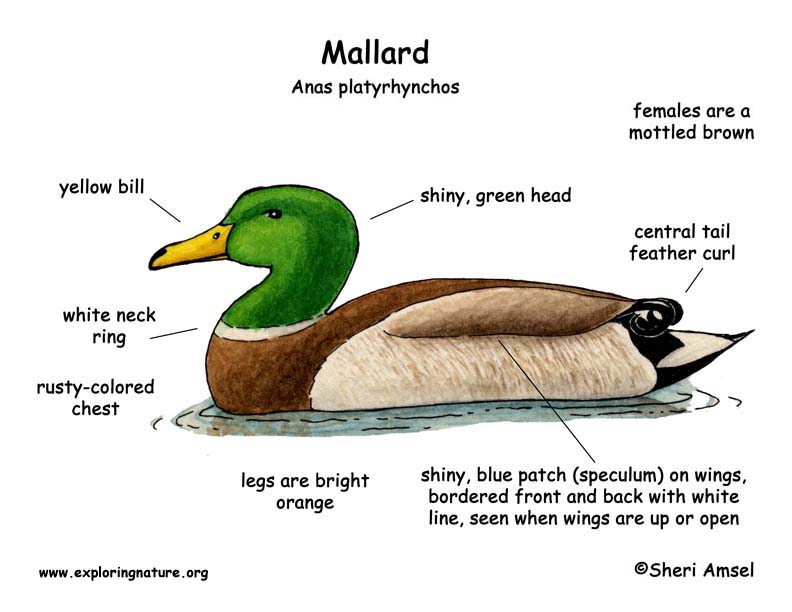

They breed in Alaska, across Canada to Nova Scotia and south to Mexico. They have also been found in Greenland and Eurasia. They spend the winters in southern Canada south to Gulf Coast, northern Florida, and into Mexico.
They live in fresh water ponds, marshes, lakes and water-filled ditches.
They have a green head with a white neck ring and a rusty-colored chest. They have blue patches on their wings. The females are a mottled brown.
They feed at the surface of the water, tipping up in shallow water so just their tails show. This is called dabbling. They sometimes will dive in deeper water.
They feed on water plants and leftover grain in farm fields. They eat insects, larvae, seeds, acorns, and water plants and bugs.
They nest in a dent scratched in the ground. They line it with grass and down pulled from female's breast. She lays 1-13 greenish-tan colored eggs.
Domain: Eukarya
Kingdom: Animalia
Phylum: Chordata
Subphylum: Vertebrata
Class: Aves
Order: Anseriformes
Family: Anatidae
Genus: Anas
Species: A. platyrhynchos
When you research information you must cite the reference. Citing for websites is different from citing from books, magazines and periodicals. The style of citing shown here is from the MLA Style Citations (Modern Language Association).
When citing a WEBSITE the general format is as follows.
Author Last Name, First Name(s). "Title: Subtitle of Part of Web Page, if appropriate." Title: Subtitle: Section of Page if appropriate. Sponsoring/Publishing Agency, If Given. Additional significant descriptive information. Date of Electronic Publication or other Date, such as Last Updated. Day Month Year of access < URL >.
Amsel, Sheri. "Duck (Mallard)" Exploring Nature Educational Resource ©2005-2024. December 13, 2024
< http://www.exploringnature.org/db/view/161 >

